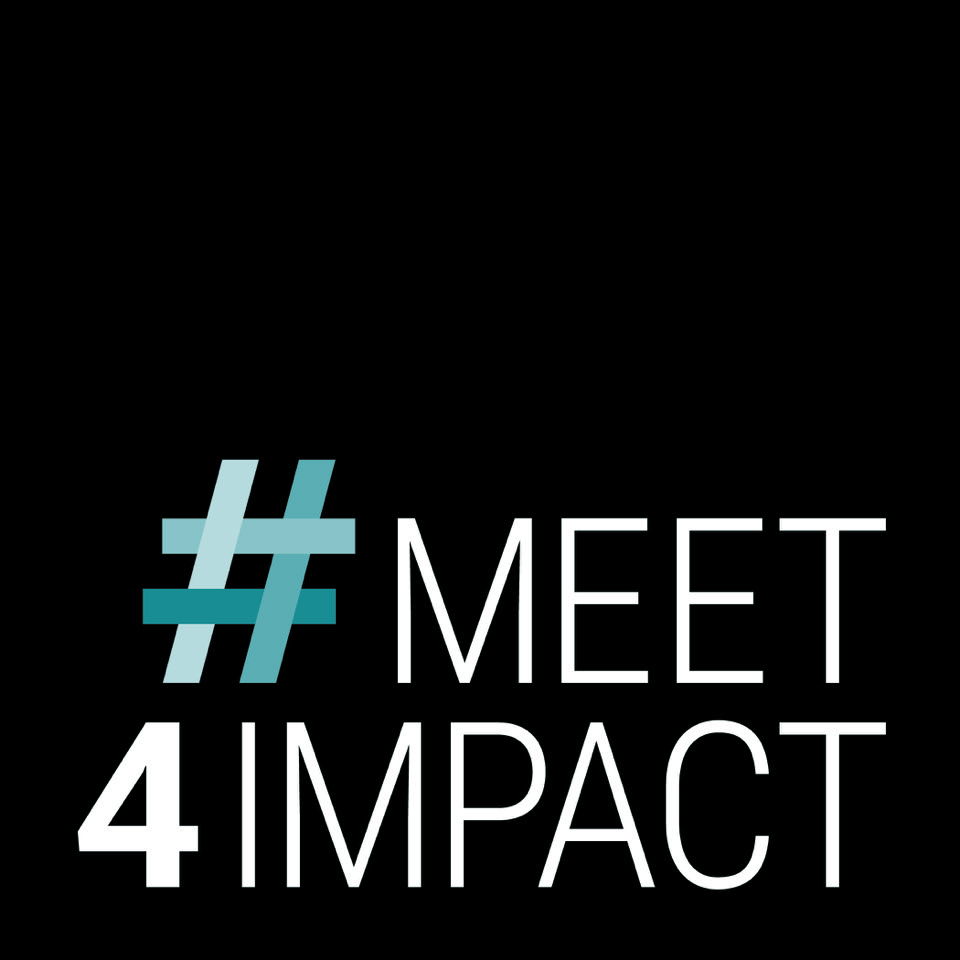This is an ambitious project but a pioneering one, to which Boardroom is really proud to collaborate exclusively. Initiated by Caravelle Strategies and its founder Geneviève Leclerc, along with a coalition of partners, the #Meet4impact Project will create an impact framework that will offer a comprehensive process for generating, managing and measuring the positive societal impacts of association conferences.
In recent years, international associations have been facing growing pressure to attract and retain members, attendees and partners, which has prompted the majority of them to question themselves on how they can improve their value proposition. Efforts have been reported on how to develop their own niche which would allow them to set themselves apart from competitive offers, and how they have been progressively been buying into the idea that they could better leave behind a legacy through their events.
Much has been written about legacy, and this is the prevailing term used when discussing these efforts. Some have spoken in favour of using the term ‘impact’, and more specifically ‘societal impact’ to describe the kind of positive and lasting change that associations can foster in their communities through activities such as conferences. While legacy is perceived as something an organization leaves behind, the term impact is a more complex and transformative concept. We could define ‘impact’ as the sum of changes that are generated by an organization through its actions on the community or ecosystem.
Creating change
The key word here is CHANGE. This implies that there is a deliberate process through which one defines a clear intention of generating change and implements a course of action to achieve this objective. Furthermore, by adding the term ‘societal’ to “impact”, we weave into this narrative the broader idea that in our day and age, there is a growing expectation that organizations take responsibility for the impacts of their decisions and activities on society and the environment at large.
Additionally, when talking about social and societal1impact, we are closer to the redefined notion of sustainability that is carried by international bodies such as the United Nations through their Sustainable Development Goals (SDGs). The SDGs, rolled out in 2015 as part of the UN 2030 Agenda for Sustainable Development, seta roadmap for global action towards supporting the planet and its people in long-term prosperity and survival. More specifically, the 17 global goals include 169 targets answering needs at all levels and focusing on 5Ps: People, Planet, Prosperity, Peace and Partnership. All stakeholders – governments, civil society, the private sector – are expected to contribute to the realization of the new agenda.
|
Want to join #Meet4impact? With different ways of being active in the project available, associations can participate by joining the community, sharing their experiencesand learning from others’ progress as they are rolled out. Destinations interested in developing this in their city can benefit from an early participation. Be on the lookout for progress being shared under the #Meet4impact project and share your stories by joining our #Association4impact community online. Get in touch with us if you are interested in exploring becoming a Founding Partner, supporting our efforts or want to be kept informed of our progress: genevieve@Meet4impact.com / www.Meet4impact.global
 |
Furthermore, when discussing legacy or impact, one is immediately faced with the prevailing discourse that there is an immediate need for measurement. But while impact measurement is necessary to communicate the value generated by one’s actions and justify ROI from partners (or members), it is mostly possible as a result of a well-planned and executed impact management strategy.
Where are we now?
We’ve been following the work being done on legacy and impact by pioneers such as BESydney, JMIC and the joint ICCA/BestCities Incredible Impacts program; several of these initiatives have been described in previous issues of this magazine. We have developed close relationships with the small group of associations that have started to communicate clearly the impact they are creating with their conference; the likes of World Confederation for Physical Therapy, World Parkinson Coalition, ESSKA, ISPCAN, and Disabilities International, to name only a few, are really inspiring.
University research commissioned by industry groups or destinations are now being published, outlining best practices and, for some, even identifying factors of success in generating societal impacts.Based on current literature and research, two strong narratives have emerged in the sector around this issue: one is focused on storytelling and the sharing of best practices from associations who are leading the trend. The second narrative revolves around the concept of measurement and converting the quantitative and qualitative data that does exist into numerical and economic performance indicators, fueling advocacy efforts on all parts.
However, both of these narratives tell only a part of the story of impact and legacy. Even if they are necessary, they are insufficient to scale up this trend to a real tidal wave. There appears to be an important gap in the conversation: there is currently a lack of action plans or frameworks supporting associations and destinations working together to replicate the success stories shared in the industry media. Associations are now at a point where they need tools and guidance on creating and implementing positive societal impacts. Meanwhile, host cities want to help them achieve this but they don’t quite know how.
In a context where an association wishes to leverage its conference to “do good” and create a positive change in the community that is hosting it, the possible synergies between the association and their counterparts in the host destination are obvious but perhaps difficult to operationalize. It requires a profound mind shift from the stakeholders in the destination, such as the convention bureau or, in some cases, the congress centre, who need to anchor themselves in the business sectors and knowledge clusters even more solidly than they have ever done before in order to be taken seriously as drivers of economic and social development.
The professionals in the convention bureaus, who have forged a close bond with the international associations, are growingly expected to take a leadership role in introducing the former to their various local ecosystems and they are perceived as the ones who can initiate the links needed in host communities. For an association to successfully generate tangible positive impact in a local community, there should be a close alignment between their intentions and the needs of the community they hope to engage with. A sustained and flourishing collaboration between these different groups will yield a wide stakeholder coalition that will amplify the potential of transformative impact.
But the association meetings sector has struggled with coming up with a concerted and impactful methodology for managing impact for several reasons: it lacks knowledge in the science of social impact assessment and so far, there have been no clear indicators for the sector. There are virtually no benchmarks serving as reference points, and we are still lacking frameworks and predictive models for use by the industry to help demonstrate the cause-to-effect relationships generating change.
A new initiative
The #Meet4impact Project is an initiative to create an impact framework that will offer a comprehensive process for generating, managing and measuring the positive societal impacts of conferences. It will propose a process enabling organizations to go from the initial intention (of impact) to implementation, to the measurement, and to generate a maximum of value out of their efforts. It will help to demonstrate the cause-to-effect relationship that allows an organization to claim accountability for the impact they are creating and to communicate this clearly.
Practically, the framework will be comprised of a methodology, a toolset, an online platform including a catalog of indicators and a progress dashboard, and the professional support to assist organizations in creating their own impact management program. It will also propose a pathway to link the different efforts that are being undertaken by industry groups and demonstrate how these initiatives can complement each other.
One of #Meet4impact’s key features is that it will propose a collaborative platform between the association, its local host member, the CVB and the local ecosystem which the association aims to engage through their impact program. Another unique component is that it is positioned as a social innovation initiative that responds to existing needs and challenges with new and different methods, calling on collective intelligence, and aiming to generate change at the systemic level (the association sector). Finally, on top of proposing industry-specific indicators of societal impacts, the platform will allow participating organisations to identify which UN SDGs their mission most aligns with and register their efforts towards the achievement of those goals.
Currently engaging organizations working on social impacts, university researchers, industry consultants, a technology company, IGOs and an international foundation, the #Meet4impact project is a growing coalition of partners deeply committed to supporting associations in their efforts to amplify the impact of their mission delivery. Over the coming months, the project will roll out a beta phase, where Founding Project Partners (consisting of an association coupled with a convention bureau in different cities of the world) will be embarking on a journey where they will test the methodology, working together and drawing on collective intelligence in a co-creation exercise akin to a “Living Lab”. Their constant feedback and that of other participating entities will allow the methodology to be iterated and refined from the initial process, which will give way to a truly powerful yet customizable model for associations to use in the future. It is an ambitious project that Boardroom will report on in each of its upcoming editions.
